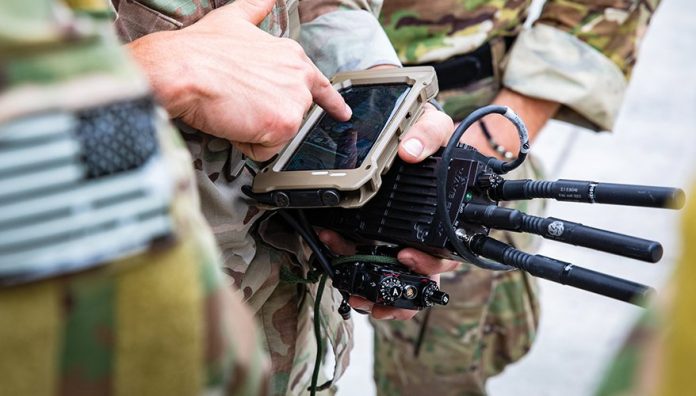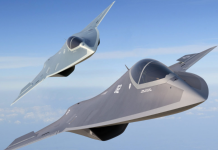Unifying networks across all services is central to the Defense Department’s joint all-domain command and control effort known as JADC2, and it’s the driving force behind one of the Army’s key modernization priorities.
Officially launched in 2020 with oversight from Army Futures Command, Project Convergence is the service’s contribution to the JADC2 campaign, which seeks to seamlessly link sensors and shooters and speed up the decision time using artificial intelligence.
Since 2020, the Army has led yearly large-scale experiments to assess new JADC2-related technologies across the Joint Forces. Its latest experiment in 2022 evaluated approximately 300 technologies and their ability to connect as a kill chain, including long-range fires, unmanned aerial systems, autonomous fighting vehicles and next-generation sensors.
As Project Convergence continues to drive modernization, one of the Army’s key priorities is a network overhaul called “division as a unit of action” that seeks to simplify operations for fighting brigades by pushing data up the chain of command.
For the past 20 years, the Army has been fighting in a brigade-centric formation, said Maj. Gen. Jeth Rey, director of the Network Cross-Functional Team at Army Futures Command.
“As we move to large-scale combat operations, it’s going to require us to do a fundamental shift into the division as a unit of action,” he said during a media event in May at Joint Base Myer-Henderson Hall, Arlington, Virginia.
Current operations in Ukraine have shown “we can’t halt,” Rey said. “We need to be on the move, and then removing complexity because those [brigade combat teams] are going to be actually in the fight. We have to move complexity up to the division level.”
Maj. Gen. Tony Potts, program executive officer for Command, Control, and Communications-Tactical, said: “When you’re brigade centric, a lot of that capability resided organic to the brigade and that’s how they could fight. … They were able to self-sustain.”
The idea behind the “division as a unit of action” concept is to “lean out the brigades,” he said. “That’s where we start talking about the simplicity.”
While the goal is simplicity, complexity is inevitable, Potts said. Capabilities are evaluated from “less to more capable, and ‘less capable’ is not necessarily a bad thing. If the brigade does not need that function, it’s okay that we remove some of it and move it to a higher level.”
One avenue the Army is exploring to cut out complexity is to use secure but unclassified and encrypted data at the battalion level and below rather than using secret-level data that needs to be on the Secure Internet Protocol Router Network, or SIPRNet, Rey said. “That will improve mobility, and hopefully survivability on the battlespace that will take us on the fundamental rebalance that we’re looking at.”
While unclassified, the network’s encryption means they’re “not just transmitting out in the open,” Potts said. They are taking advantage of commercial standard encryption for its simplicity and cost-effectiveness. Higher levels of encryption add levels of complexity and expense and slow command and control, he said.
“Even though there’s data out there, I’m moving so fast that by the time anybody could get through the encryption, it’s really not valid,” he said. “It’s not useful for them anymore.”
The Army’s default position is to use SIPRNet for transmitting sensitive data, but the network requires proprietary hardware and is notoriously slow and buggy. Having battalions operate only on the Non-Secure Internet Protocol Router Network, or NIPRNet, is not without controversy, Potts said.
Due to the “friction” and operational risks associated with transmitting data on a non-secure network, the concept remains a matter of ongoing discussions among Army leaders before the concept enters a design review phase, Potts said.
If the Army transmits “sensitive but unclassified” data on the NIPRNet, it has to think differently about how it executes fires, he added.
Technically, the Army knows how to carry out fires using sensitive-but-unclassified data, he said. The question is whether the simpler and faster approach of using sensitive-but-unclassified data at the battalion level and below creates too much operational risk.
Then there is the challenge of moving data between the classified and unclassified domains, which requires a cross-domain solution, he said.
“When we talk about simplifying the network across the domain, it has to go through the [National Security Agency], it has to be certified months in advance.” Working in a single enclave eliminates the need for that complex solution, he said.
The Army of the future is “not really about the shiny objects anymore,” Potts said. “It is now about how do you architect the network for the ‘division as a unit of action.’ And we realized we had to think differently about it.”
Building a data-centric Army is one of the goals of the “division as a unit of action” concept, “and one of the biggest changes that we’re making,” Potts said. “It’s about the unit telling us what they need, us finding the data sources, being able to pull them in and being able to visualize it in a way that they want to see it.”
“It’s too critical — what happens out on the battlefield — not to test our software, not to make sure it’s safe, not to make sure it’s interoperable. We’re starting our journey on how to speed that up,” he said.
As the Army presses forward, Project Convergence — and its role in JADC2 — remains a “forcing function” of the unified network efforts, Potts said.
“Every capability that we’re designing has to incorporate into the JADC2 environment,” he said.
The data fabric the Army is creating is “one step toward capturing not only our sensor data, but all the services’ sensor data and making sense of that, and then displaying it,” Rey said.
Security is paramount, he added. “We have to have a zero trust environment … to get across service security boundaries so that we can all collaborate with one another.”
“Zero trust” is the term for an “evolving set of cybersecurity paradigms that move defenses from static, network-based perimeters to focus on users, assets and resources,” according to the Defense Department’s Zero Trust Strategy published in November 2022. At its core, zero trust essentially assumes all users are potential threats that must be continuously authenticated, and department officials have stressed that the concept is essential to JADC2.
“If we all don’t do it together, it doesn’t work,” Potts added. “There is no such thing as this [unified network] unless it’s … JADC2.”
Joint All-Domain Command and Control is not a thing, he said. It’s a series of standards and protocols that allow the services to talk to each other. Without a JADC2 focus, “nothing we do as the network guys” works, he said. “So, we’re building this to work.”
The Army is currently working on its next iteration of the network design for fiscal year 2025 and 2026. At the forefront of fielding has been the Integrated Tactical Network, which provides secure but unclassified and encrypted mobile network communications, an Army fact sheet stated. The 82nd Airborne Division will be the first full division equipped with ITN.
The path forward will move through capability and integration experimentation with interim design review expected in July 2023 to “discuss results of lab and operation-based experimentation to date” with review focused on network architecture design, according to an Army fact sheet. Critical design review and operational touchpoints in 2024 will serve as an operational assessment of the network design.
Successfully aligning modernization efforts with JADC2 will require not just continuous exercises and experimentation, but learning from them, said Cynthia Cook, director of the Defense-Industrial Initiatives Group with the Center for Strategic and International Studies.
“It’s not how many exercises that I had, but what were the outcomes of those exercises and were they incorporated into the program itself?”
Cook said. The metrics for success on such a project are difficult to quantify, “but when they do learn technical lessons, they get incorporated into the program, and when they do learn lessons from exercising with partners and allies, that changes … policies to ensure that the U.S. as partners and allies are better able to fight together.”
The Army announced in early 2023 it would not be conducting a Project Convergence exercise this year, with plans to introduce a restructured 2024 blueprint focused on striking a balance between “expensive large-scale exercises versus conducting smaller, more frequent events,” Cook said.
“It’s not necessarily a sign that anything is going wrong. It’s just a sign that … the decision was made that they would like to wait a year until they make sure that they get value for money,” she said.
The Army possesses a unique attribute when it comes to carrying out Project Convergence: “They are very deliberate about their goal of partnering and of having exercises with allies and partners,” she said.
“I think that gets at the Army’s less platform centric, more human focused culture,” Cook said. “And I think it’s a great strength that the Army brings to this overarching ecosystem.”





